Why Does My Cat Bite Me? The Reasons Behind This Behavior
Why does my cat bite me? Discover the reasons behind this behavior, from play to fear, and learn effective strategies to stop cat biting.
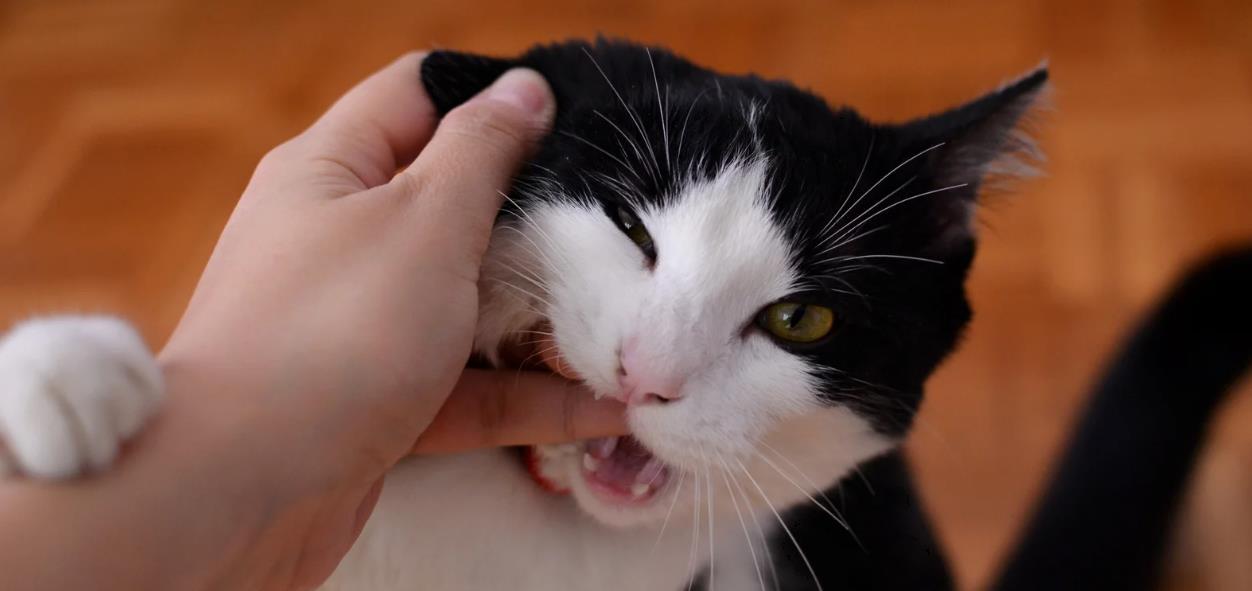
Did you know that cats in the United States bite their owners an average of 13 times per year? This surprising statistic highlights the prevalence of a behavior that can be both perplexing and concerning for many cat owners. Understanding why does my cat bite me is the first step in addressing this issue and fostering a harmonious relationship with your feline companion.
Cats can bite for a variety of reasons, such as love bites, fear and anxiety, petting aggression, frustration, inappropriate play, social pressures, and even underlying illness or pain. While some cat bites may seem random or unprovoked, they typically stem from the cat’s attempt to communicate their needs or desires. By addressing the root cause and providing appropriate training and management strategies, you can help stop your cat from biting and create a more positive bond.
Love Bites: A Sign of Affection
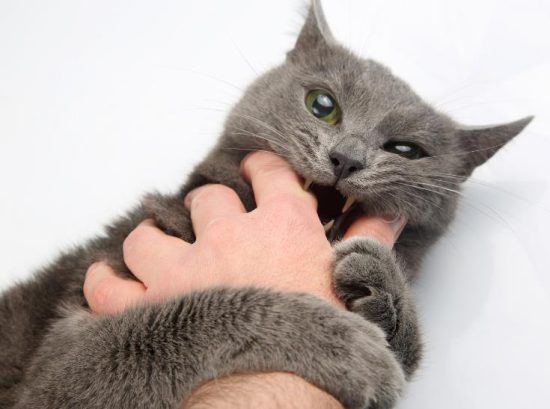
Cats often express their affection through gentle nibbles and “love bites.” This behavior, known as why does my cat bite me gently, is their way of showing fondness and can be accompanied by pawing or kneading. Love bites are typically light and not intended to cause harm. In some cases, cats may use why does my cat grab my hand and bite me lightly as a means to communicate and express their desire for something, such as food or attention.
Gentle Nibbles and Kneading
When your cat exhibits why does my cat bite me when i pet him, it’s often a sign of their affection. This behavior, which may include light nipping or licking, is a way for cats to bond with their owners. The act of kneading, where a cat rhythmically presses their paws against your skin, is another display of why does my cat bite me when i play with him, as it’s a behavior they learned from nursing as kittens.
Communicating Desires
Cats may also use gentle bites to communicate their needs or desires. For example, if a cat is feeling hungry or wants attention, they may gently nibble on your hand or arm to convey their message. Understanding these subtle cues can help strengthen the bond between you and your feline companion.
Fear and Anxiety: A Defensive Mechanism
When cats feel scared or threatened, they may resort to biting as a defensive mechanism. This behavior is often a response to a perceived threat or stressful situation, as cats use biting as a way to communicate their fear and discomfort. Understanding the signs of fear in your cat can help you prevent these types of bites and create a more positive and comfortable environment for your feline friend.
Recognizing Signs of Fear

Cats have a variety of subtle cues that can indicate they are feeling fearful or anxious. Some common signs to look for include meowing, hissing, crouching down, dilated pupils, raised hair on their back or tail, and flattened ears. These behaviors are the cat’s way of expressing their discomfort and trying to create distance from the perceived threat, which in this case may be you when you try to pet him, pick him up, or get too close when he’s feeling stressed.
Providing Space and Reducing Stress
The best way to prevent bites stemming from fear and anxiety is to give your cat the space and time they need to feel safe and comfortable. When you notice these signs of fear, it’s important to back off and give your cat some distance. Avoid forcing interactions or trying to pet them when they are clearly uncomfortable. Instead, focus on creating a calm and stress-free environment by minimizing loud noises, providing hiding spots, and allowing your cat to approach you on their own terms. With patience and understanding, you can help your cat feel more secure and less likely to resort to b`iting as a defensive mechanism.
Petting Aggression: Overstimulation and Conflicting Instincts
Cats can sometimes display a behavior known as “petting and biting.” While they may enjoy the sensation of being petted, they may suddenly turn around and bite or scratch. This can happen when cats become conflicted due to their strong survival instincts. When a cat’s need for affection and their natural instinct to defend themselves collide, it can result in this puzzling behavior. Understanding the subtle warning signs can help prevent these biting episodes.
Subtle Warning Signs
As your cat is being petted, watch for signs that it is becoming overstimulated or reaching its limit. These may include the cat stopping its purring, stiffening its body, thrashing its tail, or even hissing. These behaviors are your cat’s way of communicating that it has had enough and is about to lash out.
Respecting Your Cat’s Boundaries
When you notice these subtle cues, you must respect your cat’s boundaries and stop petting them immediately. By honoring their need for personal space and avoiding pushing them past their comfort level, you can prevent the cat biting that often follows. Maintaining a harmonious relationship with your feline friend requires attentiveness to their body language and a willingness to adapt to their preferences.
Frustration: When Communication Fails
Cats communicate through body language and vocalizations, but they can’t verbally express their needs. When their attempts to communicate are not understood or acted upon, they may become frustrated and resort to biting. For example, a cat seeking attention may nibble your hand if their attempts to rub against you are not acknowledged. Similarly, a cat may bite when they are hungry and their owner doesn’t feed them or when they want to play, but their owner doesn’t engage with them.
Cats that don’t receive the attention, playtime, or food they desire can become frustrated, leading them to express their needs through biting behavior. Recognizing and responding to your cat’s communication signals, such as meowing, kneading, or rubbing against you, is important to avoid frustration and prevent biting episodes. Understanding your cat’s needs and providing appropriate outlets can help minimize frustration-driven biting and strengthen the bond between you and your feline companion.
Inappropriate Play: Teaching Proper Behavior
Young cats and kittens often play rough, biting their owners’ hands or feet. While this behavior may seem cute when they are tiny, it can lead to problems as they grow older. Cats that are allowed to use their owners’ hands and feet as playthings during their formative years are more likely to continue this behavior as adults, potentially causing harm. It’s crucial to discourage using fingers or toes as toys and instead redirect your cat’s natural biting instincts to more appropriate play objects.
Redirecting Biting to Toys
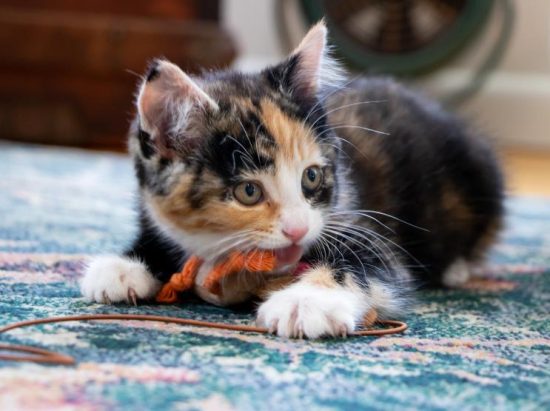
When your cat starts biting your hands or feet during playtime, immediately redirect their attention to a toy. This helps them understand that while biting is a natural behavior, it should be directed towards designated toys, not your body. Provide a variety of interactive toys, such as wands with feathers or small, fast-moving objects, to engage your cat’s natural hunting and pouncing instincts without using your hands.
Increasing Distance Between Hands and Toys
In addition to providing appropriate toys, increasing the distance between your hands and the toys you use during play is important. This can be achieved by using wand toys or other interactive toys that keep your hands away from your cat’s mouth. By creating this physical separation, you can encourage your cat to focus their biting behavior on the toy rather than your hands or fingers, which can discourage the why does my cat bite me during play, why does my cat bite me when i play with him and why does my cat bite me when i wiggle my fingers instincts.
Social Pressures: Territorial Behavior
Cats are highly territorial animals, and introducing a new feline companion into their domain without proper precautions can trigger aggressive behaviors, such as biting and fighting. When a cat’s personal space is invaded, it may feel threatened and resort to using its teeth to defend its territory.
Introducing New Cats Properly
To avoid triggering territorial aggression when bringing a new cat into the home, it’s crucial to take the time to introduce them gradually and allow the resident cat to get used to the newcomer’s scent and presence. This can be done by swapping bedding between the cats, allowing them to interact through a barrier like a baby gate, and supervising their initial face-to-face encounters. Providing ample resources, such as separate feeding stations, litter boxes, and resting areas, can also help reduce the potential for conflict.
Redirected Aggression
Cats may also exhibit biting behavior as a result of redirected aggression. If a cat is unable to directly confront an intruder, such as another feline in their territory, they may lash out at their human companions instead. This can happen when a new cat is introduced, or when a neighbor’s cat is spotted through a window. In these situations, the cat is feeling stressed and threatened, and the biting is a way of releasing that pent-up energy and frustration.
Why Does My Cat Bite Me?
Illness or Pain as a Cause
Sudden changes in a cat’s behavior, including biting, may indicate underlying illness or pain. Cats in distress may have less patience and be more irritable. If your cat exhibits a behavior change, especially if they are older, it’s essential to have them examined by a veterinarian to rule out any medical conditions such as osteoarthritis or cognitive dysfunction.
Seeking Veterinary Attention
If your older cat suddenly starts biting or your cat starts biting when they’re sick or in pain, it’s crucial to seek veterinary attention. Your veterinarian can assess your cat’s condition, determine the underlying cause, and provide appropriate treatment to address the issue. Addressing the root cause of the biting behavior is essential to maintaining your cat’s overall health and well-being.
Training Your Cat to Stop Biting
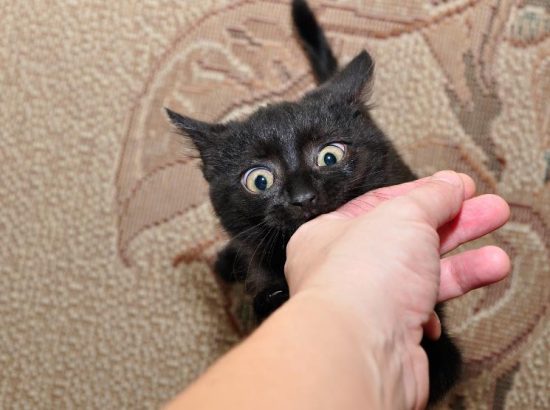
To help your feline friend curb their biting habits, it’s essential to provide them with appropriate outlets for their energy and utilize positive reinforcement techniques. You can work towards a harmonious relationship and a well-behaved pet by addressing the root causes of your cat’s biting behavior.
Providing Appropriate Outlets
Cats naturally bite and scratch as part of their instinctive behavior. By offering your cat constructive alternatives, such as interactive toys, scratching posts, and regular play sessions, you can redirect their biting to more acceptable targets and satisfy their natural need to explore their surroundings. Engaging your cat in regular, interactive playtime can help burn off excess energy and prevent boredom, often leading to unwanted biting.
Positive Reinforcement Techniques
Positive reinforcement is a highly effective approach to training your cat not to bite. Whenever your cat exhibits the desired behavior of refraining from biting, reward it with treats, praise, or its favorite playtime activity. This approach helps reinforce the behavior you want to see and encourages your cat to continue making the right choices. Cats respond best to positive reinforcement and are less likely to respond well to punishment or negative reinforcement.
Avoiding Punishment
It’s crucial to avoid punishing your cat for biting, as this can often backfire and lead to increased aggression or a breakdown in the trust between you and your feline companion. Punishment can create a negative association with you, making your cat feel threatened and more likely to resort to biting in the future. Instead, focus on providing a safe, enriched environment and rewarding positive behaviors to encourage your cat to abandon their biting habits.
Treating Cat Bites
If your cat has bitten you, taking immediate action is essential to prevent infection and promote proper healing. The first step is to thoroughly clean the wound by gently washing it with mild soap and running water. This helps remove any bacteria or debris that may have been introduced during the bite.
Cleaning and Disinfecting the Wound
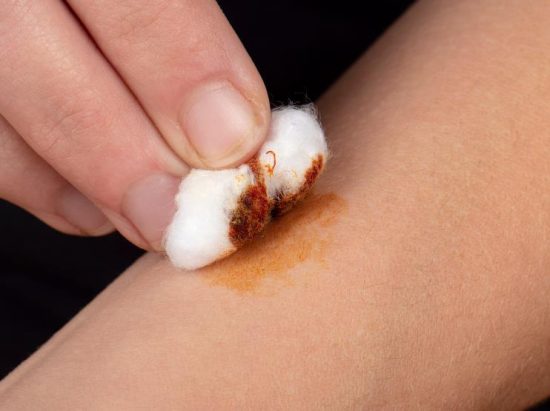
After washing the wound, apply an antiseptic solution to help disinfect the area and reduce the risk of infection. You can use an over-the-counter antiseptic, such as hydrogen peroxide or povidone-iodine, to cleanse the bite effectively. Once the wound is clean, cover it with a clean, sterile bandage to protect it.
Seeking Medical Attention
Even if the bite appears minor, seeking medical attention is crucial. Cat bites have a high risk of infection due to the bacteria present in a cat’s mouth. A healthcare professional will assess the severity of the bite, determine if any additional treatment, such as antibiotics, is needed, and provide appropriate wound care instructions to ensure proper healing.
If the bite is deep, the area becomes increasingly swollen or painful, or you experience other signs of infection, such as redness, warmth, or fever, it’s important to seek medical care immediately. Ignoring a cat bite can lead to serious complications, so it’s better to err on the side of caution and consult a doctor.
FAQs on why does my cat bite me
Why does my cat randomly bite me unprovoked?
Cats can bite for various reasons, such as love bites, fear and anxiety, petting aggression, frustration, inappropriate play, social pressures, and underlying illness or pain. Understanding why your cat’s biting behavior is crucial to address the issue effectively.
Why does my cat grab my hand and bite me?
Your cat may be expressing affection through “love bites,” or they may be displaying petting aggression, where they become overstimulated and suddenly bite during petting. Respecting your cat’s boundaries and looking for subtle warning signs can help prevent these bites.
Why does a cat bite its owner?
Cats may bite their owners for several reasons, including fear, anxiety, frustration, inappropriate play, or a medical condition that causes pain or discomfort. Addressing the underlying cause and providing appropriate training and management strategies can help stop the biting behavior.
How do I get my cat to stop biting me?
To train your cat to stop biting, provide appropriate outlets for their energy, such as interactive toys and scratching posts, use positive reinforcement techniques, and avoid punishment, which can escalate aggression. Consult with a veterinarian or animal behaviorist if the biting persists.
How do you get a cat to respect you?
Respecting your cat’s boundaries, providing appropriate outlets for their natural behaviors, and using positive reinforcement techniques can help build a respectful and harmonious relationship with your feline companion.
Does my cat hate me if he bites me?
Not necessarily. Cats can bite for a variety of reasons, including love, fear, overstimulation, or communication issues, and it doesn’t necessarily mean they hate you. Addressing the root cause of the biting behavior can help improve your relationship with your cat.
Does my cat bite me because he loves me?
While some cat bites can be a sign of affection, known as “love bites,” more aggressive biting behavior may stem from other reasons, such as fear, anxiety, overstimulation, or a communication issue. Understanding the context and addressing the root cause is essential for resolving the biting problem.





